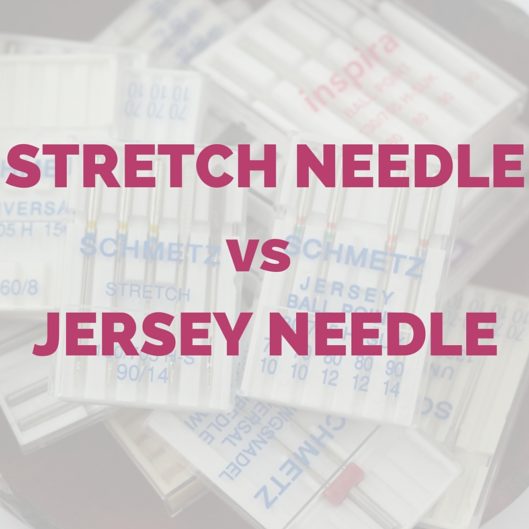
A Failed Experiment, or Is It? || Stretch Needle vs Jersey Needle
When I looked around online, I can’t find much information about the difference between the Stretch and Jersey machine sewing needles. Both are supposed to be used when sewing knit type of fabric.
My impression is that the Stretch needle is used to sew seriously stretchy fabric such as bathing suit or dance wear, but the Jersey needle is used for the “regular” knit, such as jersey and interlock.
Everywhere I read, the source of information seems to originate from Schmetz’s website. You can download a list of the sewing machine needles information too. The description is frankly pretty slim. Oh, by the way, Schmetz uses the term “Jersey” in this collateral, but they used to (or still) call the same needle “Ball Point”. In fact, I see them often at Joann and I have some in my stash too. So “Jersey” and “Ball Point” are synonymous. Clear as mud?
I found the explanation on Schmetz’s site utterly unsatisfying:
The Stretch needle: “With medium ball point; special eye and scarf area prevent skip stitches especially in highly elastic materials. For elastic materials and highly elastic knitwear.”
The Jersey Needle: “With medium ball point, for knitted fabrics.”
My first response was, Stretch needle sounds pretty magical. Why wouldn’t we just use Stretch all the time? “I want skip stitches!” Said no one ever. What is the value of Jersey needle’s existence?
I am not expert in sewing needles – I know the basics of using a universal for woven, Leather for leather, Jeans for jeans, etc. And I am pretty diligent about changing my needles for different projects. But I am not able to tell you the effect of a needle with a reduced flattening and a black oxide surface. So let’s stop that question before we move on, OK?
I also looked up in my trusty fabric book, More Fabric Savvy by Sandra Betzina (affiliate link). I flipped through every page and searched for the mention of the Stretch or Jersey needle (it tells you what type and size of needle you should use for each type of fabric). She recommends using the Stretch needle for many fabrics: alpaca, cashmere, eyelash, faux leather, faux suede, glitter, double knit, sweater knit, lace, slinky knit, sweatshirting, velour, wetsuit, and even jersey, matte rayon jersey and wool jersey. The only mention of using the Jersey needle is for knits and Lycra, but with the option of using the Stretch needle too.
I don’t get it. What is the value of the Jersey needle?
So for the sake of pursuing the truth, I have no choice but to do my own experiment. I forgot to mention that this whole episode stems from my experience with the black and white sweatshirt fleece with a knit binding for my Paulina Top. I had skip stitches all over the place, and had to rip it out multiple times. I am almost certain that the super stretch knit caused the problem, since sweatshirt fleece is supposed to be easy to handle. I used the Jersey needle. Maybe I should have followed Sandra Betzina’s advice and used the Stretch needle. But I didn’t have any on hand, and it’s not so easy to get it where I live.
Ultimately I did get the Stretch needle and the Jersey needle for this experiment. Here’s chronicle of the sew-off.
I hold many variables constant, so I can have an apple-to-apple comparison:
- I use the Schmetz brand size 90/14 for both types of needles (130/705 H-S is the Stretch needle, and 130/705 H SUK is the Jersey needle).
- I use Gutermann 100% polyester thread with both needles; however, for the sake of clarity, I use white with the Jersey needle and dark green with the Stretch needle.
- I did not use any stabilizer with any of the tests. Usually when I encounter difficulty, I would use a stabilizer to improve the result, but for the tests, I don’t want the stabilizer to mask any issue.
- I did use a walking foot on my “modern” machines, but not on the vintage sewing machine (since I don’t own one).
I’d like to note that this is my result with my sewing machines, so it’s not to say that you will have the exact same results. I believe any factor could change the results.
On sweatshirt fleece
That’s a pretty basic test. Remember that Sandra Betzina recommends the Stretch needle for sweatshirt fleece.
I think both are decent. Nothing earth-shaking. It’s a tie.
On super stretchy knit
Now to the suspected culprit, the very stretch knit on a single layer.
There’s nothing to write home about for either lines of stitches. However, there’s no skip stitches on either on them. I feel that this is still a tie.
On stretchy knit over sweatshirt fleece
This combo needs to be tested because that’s what I did on my Paulina Top (when I sewed the binding, one layer of the binding is stitched to one layer of the sweatshirt fleece first).
We are starting to see some difference here. The left one, which is sewn with the Stretch needle is significantly better looking than the right one, which is sewn with the Jersey needle. The Jersey needle one even has a skip stitch. The Stretch needle won this round.
Stretchy knit as binding on Sweatshirt Fleece
Both of them are Ugly with a capital U. With four layers of stretchy knit sandwiching the sweatshirt fleece, the stitches are uneven. For the Stretch needle one, I can’t even see the distinct stitches. I actually tried on another scrap, but with the same result. I thought that would only be the result of a problematic feed dog (not moving the fabric), but lo and behold, somehow it makes a difference in this case. Even though there’s no skip stitches for either of them, the Jersey needle one looks better to me. The Jersey Need won this round.
Now that’s supposed to be the end of the test, and no clear winner surfaced.
But wait, there’s more. I remember reading about the Stretch needle not working with older sewing machines. The person said that because the Stretch needle has a longer and wider eye, that’s why it can catch the thread better, and hence it produce fewer skip stitches. That sounds like what Schmetz said on its collateral. But as a fact checker, I looked up the info, and found that is actually untrue.
Schmetz said that the Stretch needle actually has a shorter eye length and narrower eye width (page 19 on the catalogue). Now how that translates to fewer skip stitches, it doesn’t say. That doesn’t make sense to me. The aforementioned person’s claim made more sense, but unfortunately not correct.
So when that same person said that the Stretch needle is not compatible with older sewing machines. I was a little skeptical. S/he said that the needle would damage the machine because the needle is longer. But I am going to test that anyway.
I so happen to have a couple of vintage sewing machines. I was going to use this Singer 185K.
But this machine is “merely” 60 years old. Is it old enough? It probably is, but to be very sure, I ditched the cute thing and went for an older machine.
This one is 100 years old. It has to be old enough. I dusted off some spider webs and luckily it works well (because I serviced it before I put it away). I tested using a woven fabric and a universal needle that I typically use with the machine.
Now let’s do some tests again.
On vintage machine
To be faster this time, I decide to stitch on the sweatshirt fleet and on the sweatshirt fleece/stretch knit combo at the same time. I did not do the binding this time because…
The horror! It’s a skip stitch galore for both needles. I am ashamed that my machine produces such terrible stitches. I did not believe the results, so I re-threaded, reinstalled the needles, and even re-sewed using my woven and universal needle (that one was perfect as before). Even though they look equally bad, I actually had a much worse time using the Stitch needle. The thread broke constantly. When I finally succeeded stitching something, it’s a hot mess. So that person who claimed the older machines don’t work with the Stretch needle was correct. However, the Jersey needle is useless on the machine too. Which one is better? I can’t even choose; it’s like to choose between getting hit by a train and eaten by a bear.
So ultimately, I don’t have an answer. I don’t know which one is a better needle. But here’s what I learned:
- Don’t use the Stretch nor Jersey needle on the vintage machine.
- Test with both needles (or even other types) on the fabric before proceeding.
The last caveat: the Stretch needle is much more expensive. It’s $6.99 for a package of five on Joann when it’s not on sale, compared to $4.49 for the Jersey needles. It’s not going to break my bank, but it’s a significant difference in terms of percentage. However, I will go with whatever gives me to least trouble and produces the best stitches (or more tolerable stitches). I do it for the love of sewing and making high-quality garments that I am proud to wear.
Is it a failed experiment? I am not sure.

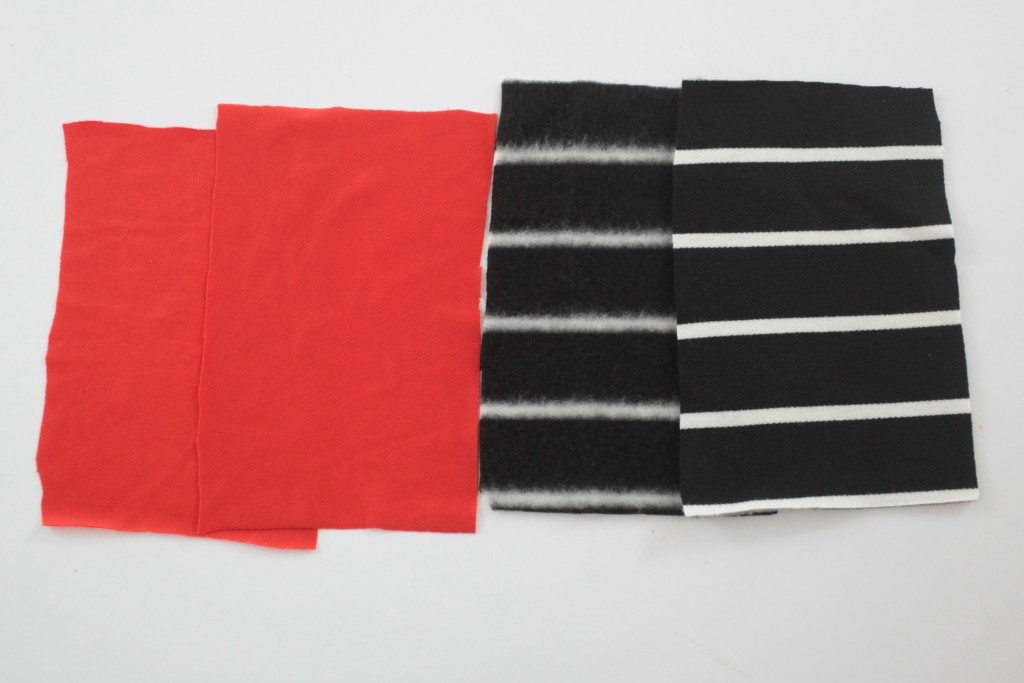
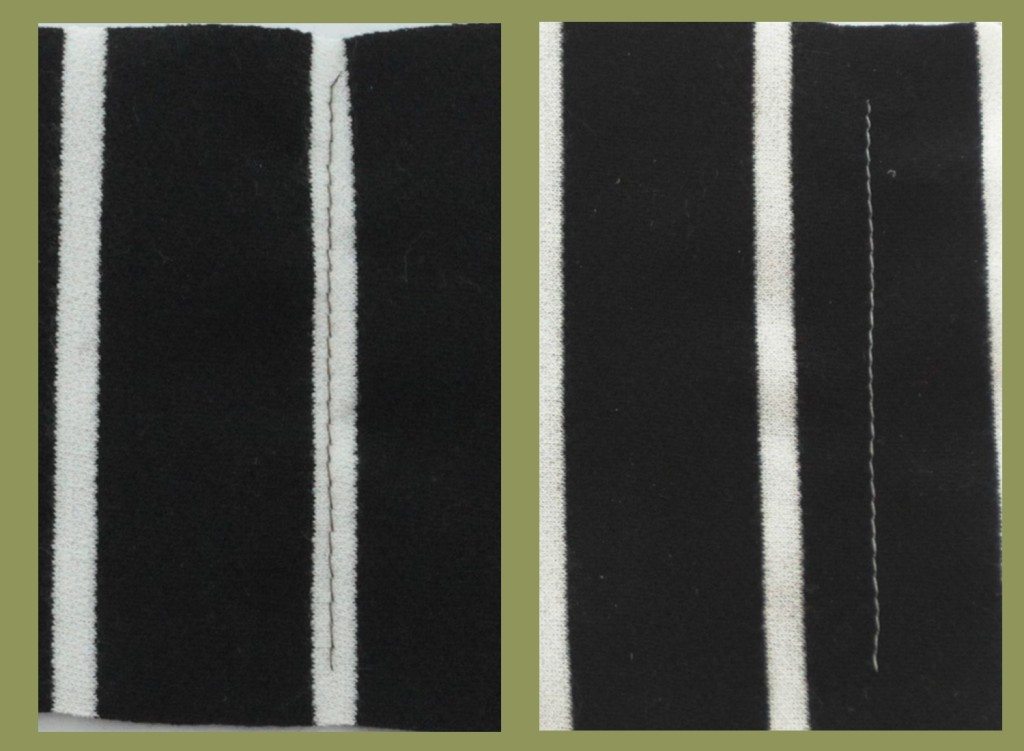



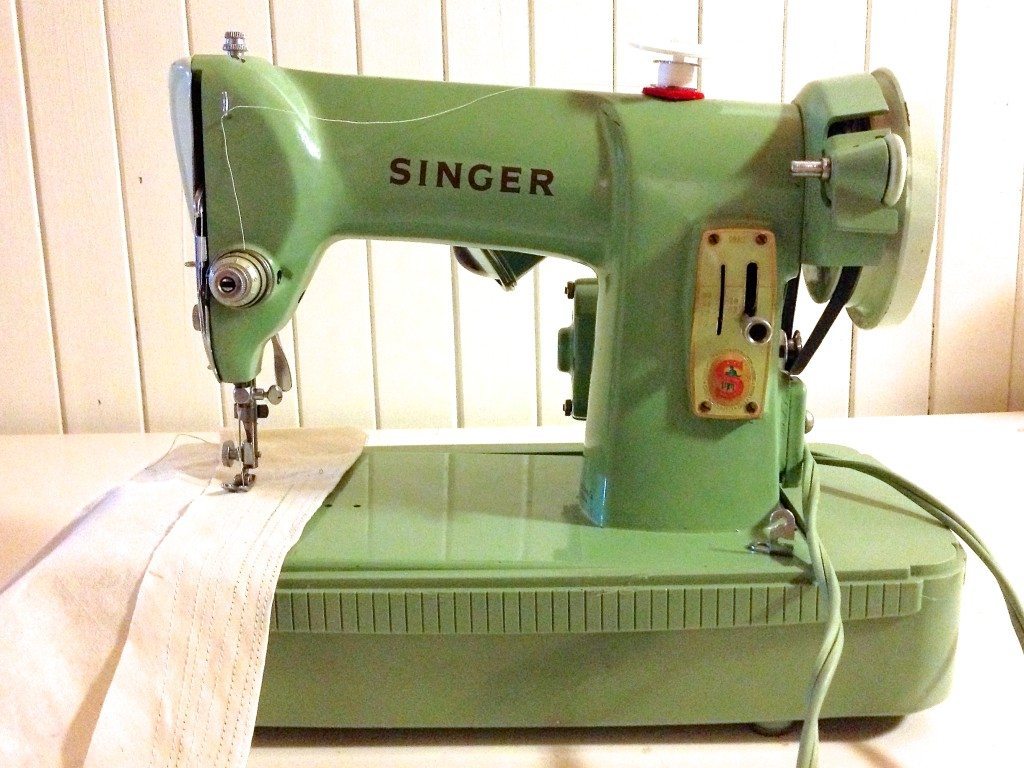

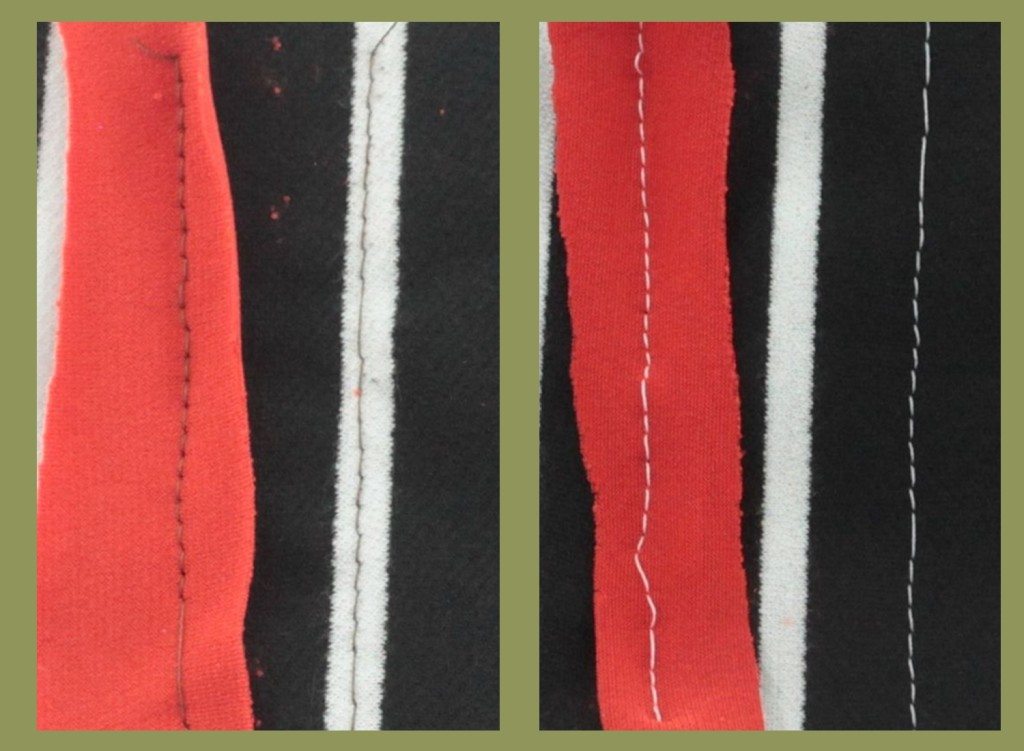

Has anyone tried using Gutermann Maraflex thread? It is meant to make sewing jersey fabric easy with a strait stitch.
I tried using it the other day and it broke in my machine a number of times so have reverted to polyester!
I have found that stretch needles are helpful for sewing very stretchy materials such as elastic. I kept having problems with skipped stitches when trying to sew elastic on cotton spandex with a ballpoint needle. When I switched to a stretch needle, I didn’t get anymore skipped stitches.
Thank you so much for doing this systematic test and providing the results in an easy to understand format. I agree that the information provided by some of these companies about their needles was not adequate. Very helpful article.
Awesome and very informative. This will be my 3rd or 4th attempt on working with lycra. This article helped alot.
Extremely interesting information. Thanks to all who contributed their experiences and ideas. I have sewn for 50+ years, but not to the extent many of you have, so when I heard the term “Jersey” needles, I was baffled. I’d only ever heard of “ball point” needles. Now knowing there are/can be definite differences in machine and needle dimensions/tolerances makes sense. As to sampling ones upcoming projects fabric, with the thread, needles, and machine you’ll be using (even different brands & component materials) makes sense to this former quality technician and owner of over 20 vintage sewing machines. 2 modern, and 2 sergers. Thanks to Michael S. Kendal for the detail info on older, vintage machines. Reading the personal experiences here helps each of us to learn from others. So happy I found this site as the info isn’t just another company trying to sell something, but the info came from real time sewers.
Hello, No mention if your “modern” machine (sewing machine basics have not changed since the 1800’s) is a rotary hook or an oscillating hook. The 99k is an oscillating hook. Oscillating hooks usually have looser tolerances and can handle heavier threads. Rotary hooks have tighter tolerances and can handle stretchy thin threads better (but also medium). Rotary hooks are over 100 years old also 🙂 My White rotary hook machine can sew a perfect straight line in two layers of T.P. (toilet paper) every time. So, I have to wonder if this affected your experiment. Another tidbit on my industrial Singer 16-88 it takes an older needle but I can replace that needle (without the shank) with a newer needle with shank and get closer to the hook. If you machine is timed so that the hook is very close to the scarf then you will catch the thread more easily/often likely on the stretch fabrics (with a rotary hook). The machine that I own that absolutely has rediculously tight tolerances is my Swiss made Elna machines that call for not using sewing machine oil in the bobbin race but instead keroesene because it is much thinner and works better in tight tolerances. That machine has such tight tolerances in the bobbin/hook that it literally warms up with a weak motor driving it. Of course nothing beats a good ole chain stitch on stretchy stuff and even more so a 2 needle/3 thread cover stitch. Best regards, Mike
Thanks very much for your systematic tests. This is really useful information.
Thank you very much for your time to make this experiment. I am facing the same question right now and thanks to your post I can take a decision.
Thank you for this experimentation and post! It is very helpful. I have spent some time too trying to understand the difference and why we need the stretch needle in the first place. I understand the needle is different- the eye, the ball point, and the scarf, but why? As I understand the scarf is larger that allows someone to have consistent stitches. Why does that area need more space?
I had the skipped stitch issue on my granddaughters Singer 237 machine,yes vintage, I only have vintage now. I ended up using a Larger needle.. size 16 ball point and Coats and Clark thread.. End of problem.. I read on another blog that this was how she solved the problem. It didn’t seem to make a difference in the holes(I was worried they would be too big) in the knit fabric. And I ran everything from old Quiana (sp) fabric I picked up in a thrift store to her heavier weight knit she was using for a cosplay outfit. ..
Hi Sheila, I had a Singer 99 and there was skip stitch problem, but then I realized the thread that I used was a bit too thick for the hole in the needle. Just like you, I used a larger size needle and that solved the problem. So I think in this instance, it’s a matter of thread/needle compatibility. I found that the thread I get from my local store (not big brand name thread) is fuzzier and thicker.
I tried using a ball point needle with ITY material and slinky stretch material and it will only sew in a straight line. I threw out so many needles to the point where I thought my machine needed to be replaced. So I decided to do a test on regular material and my stitches were perfect. Bottom line, it was definitely the needles. They make a huge difference. I have over 100 ball point needles in my stash and hopefully, I’ll be able to use them one day, but its nothing but stretch needles and stablizers from now on. They save time and frustration.
Thank you for taking the time to do this comparison. I was having lots of skipped stitches on a stretch knit using my two coverstitch machines. Doing a similar comparison with two ballpoints and two stretch needles the results were a tie. Both did a poor job on a _single_ layer stretch knit.
Going through _two_ layers of the same fabric improved the results, again with no clear winner. The one thing that made a tremendous difference was adding a stabilizer (tear away or thick water soluble, doesn’t matter). My conclusion: with stretchy knit there is no way around using stabilizer if you want good seams.
Beautiful review, I have never known the difference either, but now that I read your blog, I have noticed that in fact in the swimsuit fabrics when you zigzag occasionally jumps a stitch and apparently I use the jersey needle . I did not even know about the existence of the stretch needle, but I will try to find it and do the test.
Thanks for doing this experiment and sharing! The proof is in the pudding 🙂
This was a fantastic blog article! Thanks for all the details and digging. You saved me a ton of time from trying to pull together same info. I was just watching a Craftsy class by Sandra Betzina and she said “don’t be lured by jersey needles, always use stretch” because jersey needles are only for swimwear and extremely elastic fabrics. That contradicted what I understood to be the difference between those needle types and it contradicts the info you pulled from Schmetz. I think you are spot on that in the end the best bet is to test the combination of the fabric you intend to use, the needles you have on hand, the stitch itself, and even the thread or machine. Thanks again!
Hi Kennis,
I just found your blog via PatternReview and thought that I’d post a copy of what a wrote there regarding Jersey v Stretch needles. I do not have an financial interest in any needle/notions company in case you are wondering after reading my comment:
Yes, both the Jersey and Stretch needles have rounded (ball point) tips so that they will go between the knitted stitches of the fabric, rather than piercing them. I have always used the Jersey needles for fabrics that are not as tightly knit due to the size and kind of fibre of the individual threads they are knit from, i.e. cotton, wool, rayon, silk, polyester with a wee bit of lycra/spandex. The Stretch needles I reserve for fabrics that are a tighter knit due to their much finer fibres, i.e. those made with a lot of lycra, spandex or elastane for example. Another tip as to which needle to use is the blade diameter of the needle (needle size). The tighter knits seem to like the smaller blade (smaller sized) Stretch needles (sized 65, 75, 90) v the Jersey needles (70, 80, 90, 100).
You can pretty much use a Stretch needle most of the time on knits without problems. Try a 65-75 size for stitching a couple layers of fabric and up size to the 90-100 when going through more layers (crossing multiple seams) so you do not end up breaking your needles. All that being said, always test on a long (12-18 inch) double layer strip of fabric, as well as through up to 6 layers of your fabric before making a final decision. This is not gospel; it is just my personal experience.
I read on someone’s blog once that jersey or ballpoint needles are for mostly natural based fabrics like cotton/lycra and a stretch needles for all synthetic fabrics. I have no idea is it is true or not.
Great experiment! I think you’ve come to a good conclusion….Sewing needles for knits depend on the sewing machine AND the fabric being sewn. I think the stitch being used to sew knits even makes a difference. I keep an assortment of needles on hand for sewing with knits:
Ball Point needles (a/k/a Jersey)
Stretch needles
Universal needles
Microtex needles
Part of finding the best needle for sewing on a particular knit fabric also involves experimenting with stitch length and stitch type. Many sewing machines have built in stretch stitches that work well with knits. The good ole’ narrow zig zag seems to work well on my older machines or if I’m sewing through many layers of knit fabric. The only machine I have that does a good job with a STRAuGHT stich when sewing with knits is my Pfaff, which has a built-in walking foot.
For a plethora of possible suggestions and solutions, I suggest you post your experiment on http://patternreview.com
Again, you did a great job putting this experiment together. Thanks so much for sharing it.
Thank you for the interesting article, but please don’t continue that myth that one shouldn’t use jersey/ball point needles in vintage machines!
I only sew on vintage and antique machines and I regularly make clothes for my family with knit fabrics and using the Schmetz jersey/ball point needles. I just finished buttonholes for sweaters for my girls sewing a cotton lycra binding wrapped over thick french terry with a jersey needle, no problem. All done on my 1914 Singer machine. I never have problems with skipped or erratic stitches on my old machines when using the jersey needles.
I was looking forward to some insight on the stretch needles as sewing elastic bands is messy because the jersey needle pokes the elastic through that sometimes catches on the bobbin case. This is obviously a needle/elastic problem, not a machine issue. I will probably pick up the stretch needles and give it a go with them. Thanks for the insight!
Suz, that’s a good point. It could very well be an issue with the combination of vintage machine + fabric + ball point needle, not necessarily just vintage + ball point needle.
I’ve been using both types of needles. Most of the time, I use ball point or jersey needle when I’m sewing knits (interlock, stretchy fleece or lycra but mostly lycra) it works well, no problems at all. If I have to sew in multiple layers, I found out that adjusting the stitch length really helped a lot to avoid skipping. Now, with shiny fabric like nylon lycra or swimwear, I use stretch needle. Even with multiple layers or with transparent elastic, it works beautifully. I guess it depends on your personal preference, both stretch and ball point are awesome needles!
Wow interesting!
I have often had trouble with jersey needles, so I don’t use them anymore. I prefer stretch needles. Don’t know why, but that has been my experience.
I used to sew costumes for a dance school. One lycra had holographic metallic spots on it. Other people were having trouble getting nice stitches on this fabric. I tested it with a universal needle and no problems….so sometimes, when I am having trouble with stretch needles, I go back and try a universal…sometimes to good effect. Which is why it is always a good idea to test on scraps first.
If you think bout hwo a machine makes a stitch, the shorter and narrower eye makes sense. The needle has to take thread down to the bobbin to create a stitch. Stretchy fabric drags and pulls on the needle and thread making it hard to pull the thread deep enough to make a stitch. With a shorter and narrower eye, you are more tightly controlling the position of the thread on the needle making it more likely that thread will be deep enough in the bobbin to make a stitch.
That does make sense Lynn. Interesting.
Fascinating… I’ll admit that I don’t really know the difference between the needles, either.